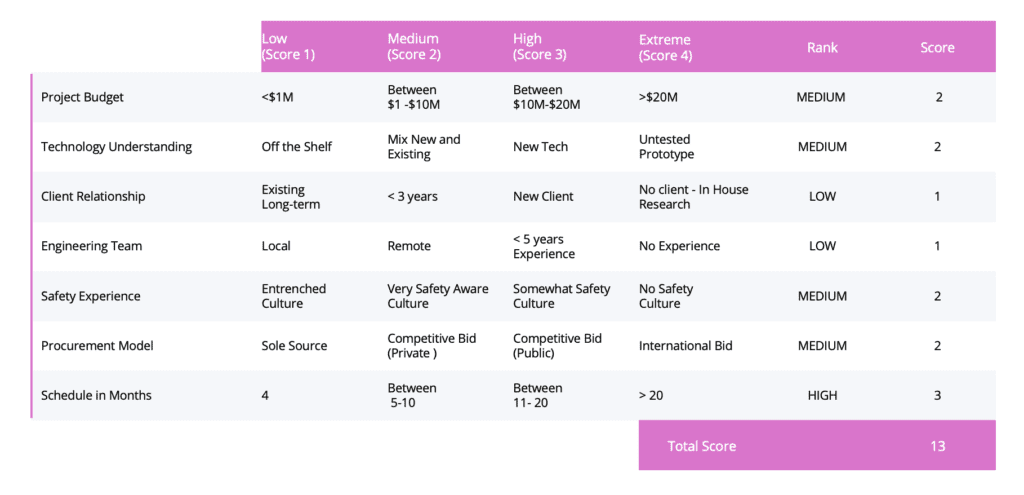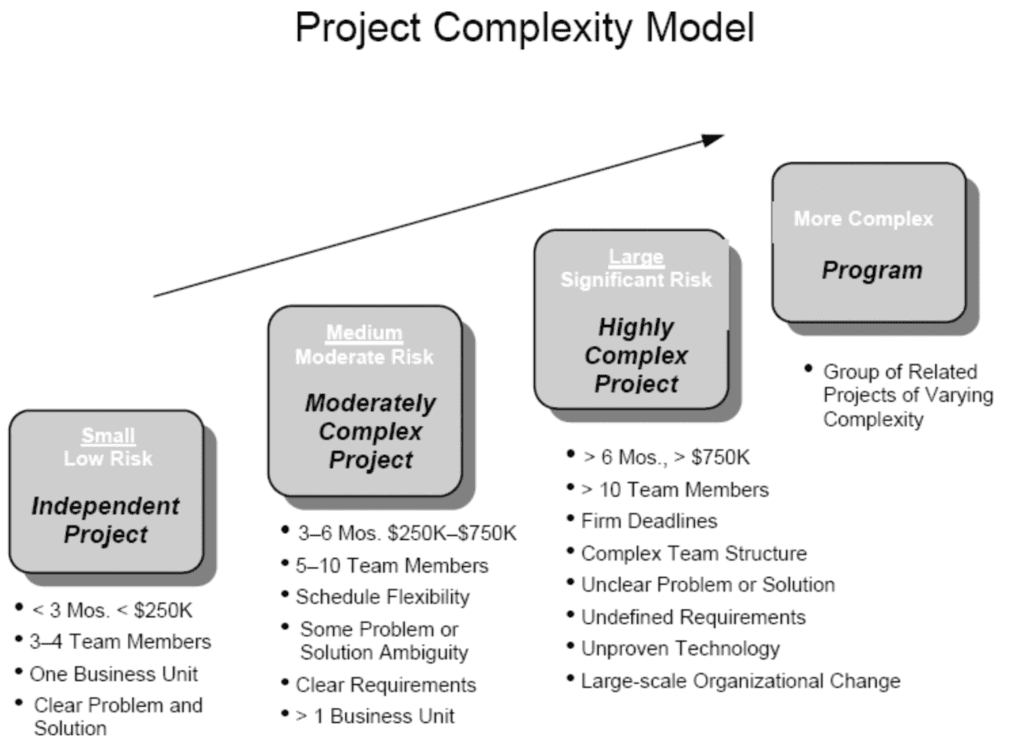Determine The Project Complexity
When considering starting a new project or completing a portfolio review, it’s important to determine the project complexity level. Being able to accurately assess the complexity of any given project is an invaluable skill for any project manager.
Knowing how to accurately judge a project’s complexity level can help ensure that a project runs smoothly from start to finish and that it is completed on time and within budget. Additionally, it can aid in planning and allocation of the right resources.
Utilizing a standard framework helps project mangers determine the complexity of a project. Therefore, by having a standardized approach for assessing project complexity, one can easily and accurately evaluate each project in a consistent way. Ultimately, this can be a great help to project managers, allowing them to properly manage their tasks and efficiently complete their projects.
Identifying Project Inputs
Identifying project inputs is an essential part of any successful program or portfolio. Hence, it requires careful consideration to ensure that the characters and resources used are appropriate for the organization’s goals.
Taking time to create a comprehensive guide can help ensure that the project inputs are well-suited to the organization’s needs and provide the desired results.
Our projects involve the following complexity characteristics:
Technology Understanding: Is the technology used for this project pre-existing and readily accessible? Or will there be elements involved that are still to be tested?
Client Relationship: Is this an established client where workflows are streamlined? Or is this a new customer who is relatively new to their sector?
Procurement Model: There are numerous standards to consider when it comes to procurement. From single-source procurement, competitive bidding, to using prequalified vendors who have existing master service agreements.
Project Risk: Is the project risk understood and does it have a reasonable likelihood of success?
Project Safety Risk: Does this project involve any potential safety hazards? Are there hazardous tasks which will place workers safety at risk?
Project Budget: What is the estimate of the total project budget? Is it more than $5M?
Project Duration: Provide an estimate of the total project schedule? Is it more than 12 months?
Clarity of the Problem Statement: Do we understand this issue fully or should additional research be conducted?
This is a basic outline of what to keep in mind when you’re determining project complexity criteria. Depending on how big and complex your organization is, you can always expand the criteria to fit your project needs.
Assess The Scope and Complexity of Tasks

Complex projects require an immense amount of energy and time investment to complete. To ensure a successful project, it is important to accurately assess the scope and complexity of tasks. By assigning a value to each task based on its complexity, organizations can better allocate resources and ensure that projects are completed in an efficient manner.
Additionally, by assigning a value, organizations can better determine which tasks require more attention and prioritize projects accordingly. This method also enables organizations to identify potential problems that may arise during the completion of the project and quickly address them. Ultimately, assigning a value to each task helps ensure that projects are completed in the most efficient manner possible.
Historical project data offers invaluable insight into past performances, by measuring and comparing results to inform future decisions. By validating against historical data, a comprehensive understanding can be developed of the success or failure of past projects. Ultimately, these clues and insights will validate how to approach similar challenges in the future. With access to this invaluable resource, you can make informed decisions that lead to better outcomes.
Determine the Project Complexity Scale
Next decide how complicated or straightforward you want the project complexity scale assessment to be. The scale of choice can range from a ease to use, low, medium, and high scale to one that assigns numerical values. It is essential to evaluate the significance of each component to the overall project in order to ensure its success.
When it comes to organizational values, assessing importance is key. Safety should always be a priority when it comes to weighting different values within an organization. This is especially relevant in an industrial setting, where the consequences of negligence can be severe and costly. Organizations must take the necessary steps to ensure their values are properly weighted, with safety being given the highest priority.
Create a powerful and effective project complexity strategy

With all the pieces in place, it’s time to assemble the puzzle. By combining all the elements, a powerful and effective project complexity strategy can be developed that will help reach project goals. With careful consideration of each element, the outcome can be tailored to meet customer needs and provide better results. This is the ideal moment to put everything together and create something truly remarkable. A simplified example of a classification risk matrix below:
Classification Risk Matrix

Define the Project Complexity Meaning
Classification Qualitative Matrix

Simple Project Complexity Definition
A “Simple Project” is typically understood to be a project which can be managed with minimal monitoring. Secondly, it needs a sound understanding of project management techniques and operations to efficiently execute it. Thirdly, the objectives of such projects are typically clear and straightforward, making it easier to set realistic expectations and achieve success. Lastly, the goals are easy to comprehend, and the budget and timeline are restricted in scale and scope.
Resource Driven Project Complexity Definition
A “Resource Driven Project” is typically understood to be a project that can be managed with close oversight and supervision. To ensure a successful project outcome, the project manager might need additional support from a project coordinator. Additionally, a project gatekeeper and a project executive should be assigned. Although the requirements of the project are predictable, flexibility must be maintained to adjust to any changes that may occur in during its lifecycle. Consequently, an effective change management process should be implemented.
Complex Project Complexity Definition
A “Complex Project” is typically understood to be a project that requires significant oversight and executive support. Numerous facets such as objectives, goals, and scope are often subject to variation. The project manager may request further personnel to assist, such as procurement professionals, risk supervisors, cost controllers and so on. There’s an expected high level of difficulty and potential for risks in this project. It is important to note that if any of the criteria for categorization rate as “Extreme”, then a thorough risk assessment must take place before continuing.
PMI Project Complexity Definition
“ PMI incorporates their version noted as Exhibit 3 for another view of the Project Complexity Model. This view incorporates the concept of program management.” Before investing your resources and time on less complex projects, it is important to prioritize the high-risk, complicated tasks first. This way you’ll be able to identify and mitigate any issues that could affect the successful completion of the project.

Conclusion – Determine The Project Complexity
It’s essential to correctly assess the complexity of a project before setting out on it, to ensure an efficient process and successful outcome. This evaluation can help you stay on track in terms of time and budget while reaching your objectives. Furthermore, it can help with the effective utilization of resources and their proper allocation.
Analyzing and creating a properly detailed project guide are essential to ensure that all inputs match your organization’s requirements and deliver the desired output. Taking time to build this guide can prove beneficial in the long run.
Koncept is the perfect choice for organizations in need of help when deterring their project complexity model.
